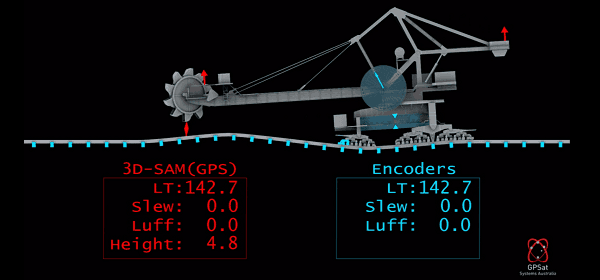However, are these old positioning technologies reliable enough alone to underpin modern safety & integrity for mission critical machine optimisation projects..? (We don’t think so..!)
However, are these old positioning technologies reliable enough alone to underpin modern safety & integrity for mission critical machine optimisation projects..? (We don’t think so..!)

The aviation industry for decades has understood that the optimum way to achieve complete confidence in mission critical systems is by deploying redundant “dissimilar sensor technologies”. With the different / dissimilar technologies duplicating / emulating the traditional mechanical encoder measurements, any sensor failure modes are completely and statistically independent, thus delivering the greatest levels of fault tolerance and reliability possible for these mission critical applications.
3D-SAM’s GECs derivative does exactly this, by using GNSS dissimilar navigation technologies to duplicate / emulate the traditional mechanical encoder measurements. Delivering fully independent “absolute positioning” navigation solutions. With GECS installed, if the two independent systems (mechanical tags + encoders and GECS satellite GNSS navigation) agree on locations and orientations, then, any PLC automated control systems can be highly confident that the machine’s positional information is both true and correct. Hence with this independent duplicate validation, operational processes and controls can be further optimised to deliver both improved efficiency and operational safety. Very substantial operational efficiencies can be realised through greater confidence through improved machine navigation, these being:
Provided below is one example, where GECS (shown in RED) has been installed by several Australian mining customers, to generate machine Long Travel, Boom Luff, and Boom Slew using dissimilar navigation technology to the original electromechanical sensors (shown in BLUE).
For more on our 3D-SAM GECS technology, please contact our sales team.
